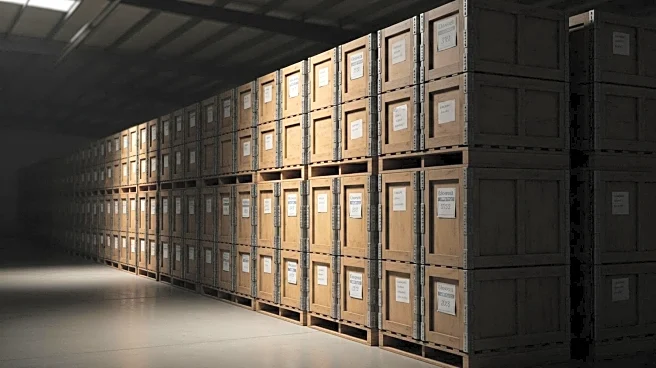What's Happening?
A new tax provision, Qualified Production Property (QPP), has been introduced to incentivize domestic manufacturing growth in the United States. This provision allows for immediate 100% expensing of manufacturing facilities, provided they are owned and built from the ground up or acquired as existing properties not used for manufacturing since 2021. Unlike traditional depreciation methods, which spread deductions over decades, QPP enables substantial portions of facility structures to be immediately deductible, significantly altering project economics and cash-flow timing. The provision mandates owner-occupancy, meaning benefits cannot be claimed by tenants or landlords in typical lease arrangements, thus encouraging manufacturing ownership over leasing.
Why It's Important?
The introduction of QPP represents a significant shift in U.S. tax policy, aiming to bolster domestic manufacturing capacity. By offering immediate expensing benefits, the provision could accelerate manufacturing reshoring trends and drive investment in new facilities. This policy shift aligns with broader geopolitical and supply chain concerns, emphasizing the need for permanent domestic manufacturing capacity. The focus on owner-occupancy challenges existing industrial real estate strategies, potentially affecting the value propositions of real estate investment trusts and specialized property owners. Companies may need to reevaluate their real estate strategies to capitalize on these tax benefits.
What's Next?
Manufacturing executives are advised to assess their facility strategies in light of QPP, particularly given the limited window for qualifying projects. The requirement for construction to begin after January 19, 2025, but before January 1, 2029, necessitates swift action to optimize benefits. Companies currently leasing manufacturing space may consider ownership arrangements to leverage tax advantages. The effectiveness of QPP will depend on forthcoming Treasury guidance, which may take time to develop, creating both opportunities and risks for early adopters.
Beyond the Headlines
QPP's emphasis on new construction and owner-occupancy could drive manufacturing investment in regions with available industrial land and skilled workforces. The provision's success in fostering manufacturing investment will hinge on companies' ability to integrate its requirements into strategic planning processes. As global supply chains evolve, QPP provides powerful incentives for building domestic manufacturing capacity, potentially reshaping the industrial landscape.










